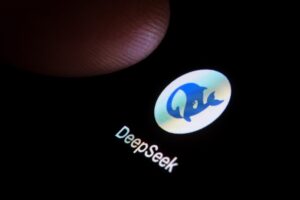DeepSeek Breach Unleashes Surge of Activity on the Dark Web

DeepSeek Breach: A Troubling Event in the Dark Web
Recently, a significant security breach at DeepSeek has raised alarms about data safety and privacy. This incident has drawn considerable attention, especially regarding how sensitive information can end up on the dark web, raising concerns for individuals and businesses alike.
What Happened During the DeepSeek Breach?
The DeepSeek breach involves unauthorized access to sensitive information, potentially exposing personal data of millions of users. DeepSeek, a platform known for its advanced search capabilities, encountered a severe vulnerability, allowing hackers to infiltrate its systems.
Scale of the Breach
- User Data Exposed: Reports indicate that personal details, including names, email addresses, and, in some cases, financial information, may have been compromised.
- Timing: The breach was discovered recently, but the unauthorized access may have been occurring for weeks before it was detected. This delay in response highlights serious gaps in DeepSeek’s security protocols.
The Dark Web Connection
One of the most concerning aspects of the breach is how this stolen data may end up on the dark web. The dark web is a part of the internet not indexed by traditional search engines and is often associated with illegal activities, including the sale of stolen data.
How Data Ends Up on the Dark Web
Hacker Forums: Stolen information is often sold on forums frequented by cybercriminals. Hackers may post the breached data, offering it for sale to other criminals looking to exploit it.
Identity Theft: Using personal information gleaned from breaches, criminals can perpetrate identity theft, opening new credit lines, and more in victims’ names.
- Phishing Scams: Compromised emails can be used for targeted phishing attacks, tricking individuals into revealing more sensitive information.
Implications for Individuals and Businesses
The fallout from such breaches raises important questions for both users and organizations.
For Individuals
- Monitoring Accounts: It’s crucial for users to regularly monitor their financial accounts for any unusual activity.
- Password Security: Changing passwords and using two-factor authentication can help enhance personal security.
- Identity Theft Protection: Considering services that monitor identity theft can provide additional security.
For Businesses
- Reassessing Security Protocols: Organizations must evaluate their security measures and ensure they are up to date with the latest protection technologies.
- Employee Training: Staff should be regularly trained on recognizing phishing attacks and maintaining cybersecurity practices.
- Incident Response Plans: Establishing clear plans for how to respond to data breaches can minimize damage and aid in faster recovery.
Prevention and Future Steps
To combat such incidents in the future, both companies and users need to take proactive steps.
For Companies
Regular Security Audits: Companies should conduct periodic security audits to identify and address vulnerabilities.
Utilizing Encryption: Encryption of sensitive data can act as a safeguard if access is gained, rendering the data unusable.
- Investing in Cybersecurity: Investing in robust cybersecurity infrastructure and tools can be the first line of defense against breaches.
For Users
Being Cautious Online: Observing caution when sharing personal information online can reduce the risk of data being compromised.
- Utilizing Unique Passwords: Using different passwords for different accounts can help minimize the risk associated with a single breach.
Conclusion
The DeepSeek breach serves as a stark reminder of the vulnerabilities that can exist in digital platforms. Staying informed about cybersecurity practices and adopting preventative measures are essential steps in navigating the current landscape of digital threats.






